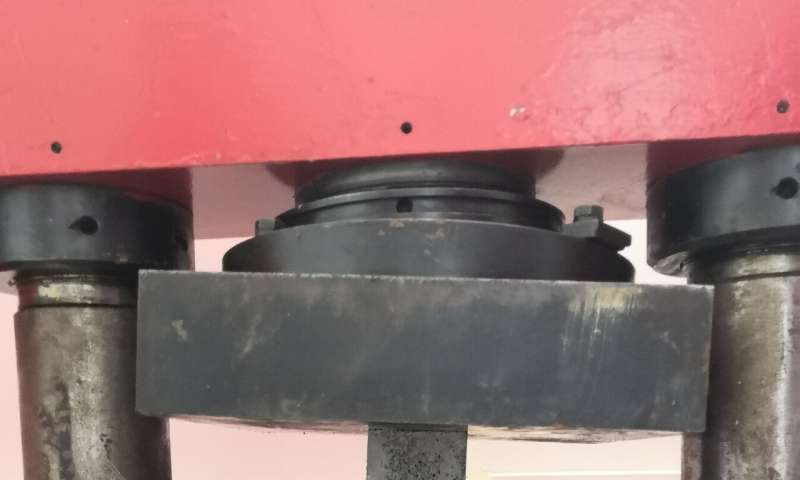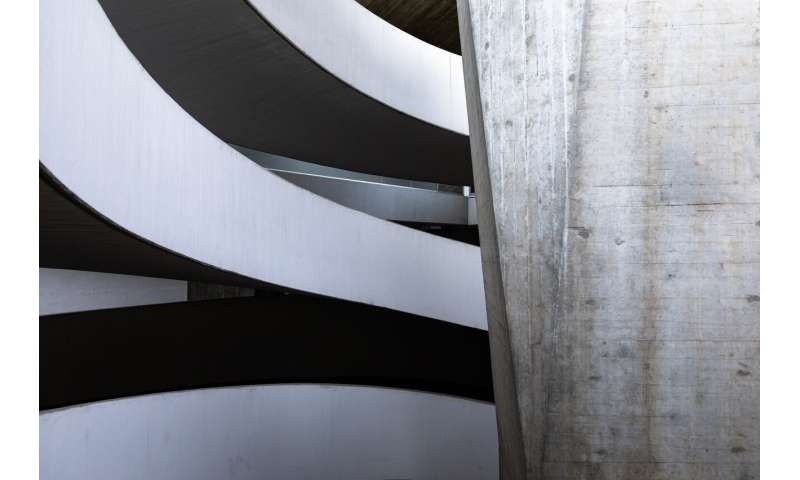Heavy-duty “electrical” concrete for self-healing structures

Engineers of Far Eastern Federal University (FEFU), in collaboration with colleagues from the East Siberia State University of Technology and Management (ESSUTM), have developed super-strong electrically conductive concrete infused with carbon nanoparticles. The scope is a special construction, automatic monitoring of structures deformations and buildings self-healing, production of non-freezing runways, road surfaces, and areas for cars charge while driving. A related article appears in the Magazine of Civil Engineering.
Based on the tests, engineers of FEFU and ESSUTM universities registered that the new concrete not only electrically conductive, but is also 30-35 percent stronger than the certified samples had been used for comparing.
Part of the Portland-cement in the new concrete mixture was substituted with ash and slag waste from energy plants and waste from granite processing. Thus, its production is more economical and environmentally friendly than the production of ordinary concrete and existing analogs. To provide concrete with electrical conductivity scientists put in carbon modified nanoparticles instead of expensive carbon nanotubes. Nanoparticles applied are the by-product of coal processing by electric discharges in a plasma reactor according to the technology developed by professor Sergey L. Buyantuev from the ESSUTM University.
"Carbon nanoparticles act as crystallization centers during the solidification of the mixture. As a result, slabs of new concrete have a denser structure compared to the control samples. Due to the lower porosity, new concrete is more water and steam resistant and, as a result, has longer durability", explains Roman Fediuk, Lt. Col., professor at the FEFU Military Training Center, the winner of the XIII All-Russian contest "Engineer of the Year 2018". "It is possible to use "electric" concrete for the production of special surfaces-heaters, which can be the walls of garages, parking lots, floors, paving slabs. Also, it is possible to build up self-healing structures in which functional surfaces like walls, floors, etc. simultaneously act as a moisture, fire, and deformation sensors, and where its damages will self-mend by the means of the electromagnetic field."

Scientists of FEFU and VSGUTU universities reviled that the concrete mixture acquires optimal mechanical and electrically conductive properties when the proportion of carbon nanoparticles in the mixture reaches only 0.01—0.1 percent of the total mass. Thus, the engineers confirmed the assumption that nanoparticles are most effective only at low concentrations. The concentrations from 1 percent and above impact concrete negatively.
According to Prof. Fediuk, scientists worldwide are still little studied electrical properties of concretes, so these types of concrete are not much applicable.
In the future one can see a possible application of such concrete for the engineering of roadbed with the properties of electrical conductivity so cars will receive energy in a non-contact manner. By the same principle, other surfaces-rechargers should operate. To implement that, scientists have yet to solve the problem of the stability of carbon particles in a concrete mix.
A scientific school for the design of smart composites for special construction and civil engineering led by Prof. Roman Fediuk run on the base of the FEFU Military training center. The main principle of the school is to develop artificial materials alike the natural ones. That approach is promoting by modern science called Geonics (Geomimetics) which foundations laid by Professor Valery Lesovik from V.G. Shukhov Belgorod State Technological University. Engineers from Moscow, Kazan, and the Russian Far East are working to further the method.
More information:
DOI: 10.18720/MCE.92.14, engstroy.spbstu.ru/userfiles/f … es/2019/8(92)/14.pdf
Provided by Far Eastern Federal University